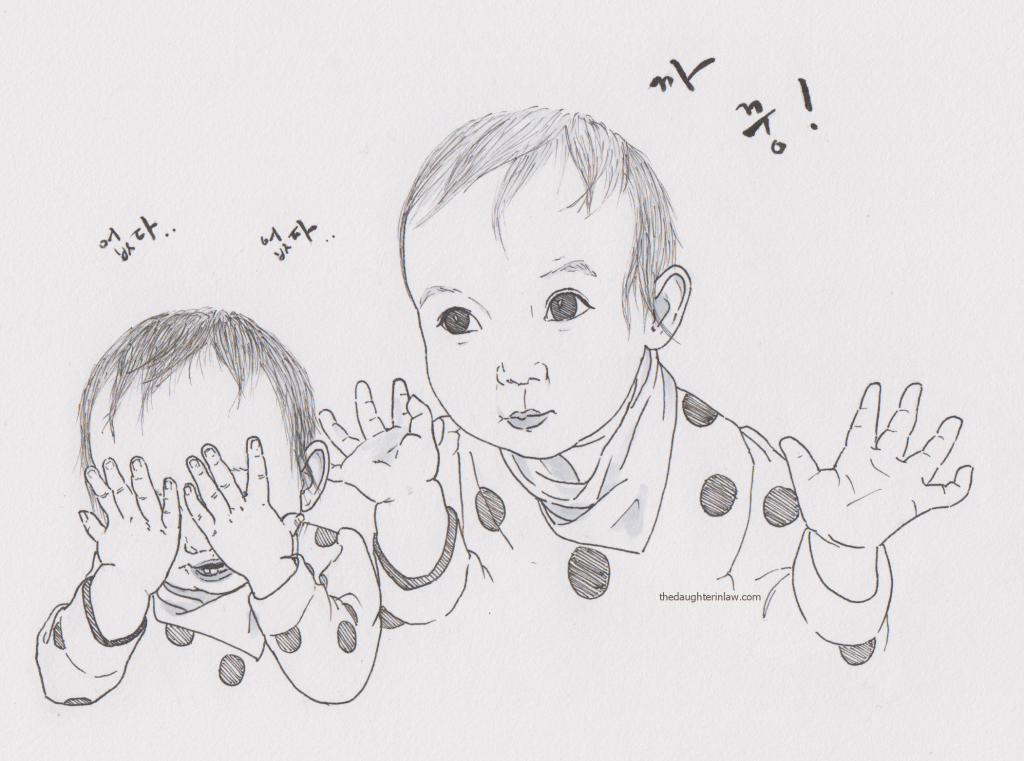
The Korean language has a LOT of onomatopoeia (의성어) and mimetic words* (의태어) to learn. In my experience they are difficult to memorise as an adult, but children aquire them easily and they play a major part in children’s speech (even in English, where a child might say “choo choo” instead of “train,” or use a sound word instead of a verb)
It’s beyond the scope of my ability and capacity to teach Alice all of the 의성어 and 의태어, but I still try to regularly choose a few, based on current situations or places or things we encounter a lot, then use them as much as possible to absorb them into our every day dialogue.
I started with animal sounds. As long as you can keep your mind open as you say the sounds (since some of them may not sound convincing to you at first) they are easy to memorise.
At first I would make up a question and answer monologue, for example “돼지가 어떻게 우는지 알아? 꿀꿀! 꿀꿀하고 울어요! 고야이는 어떻게 우는지 알아? …”
Obviously it is best if you can point the animals out in a board book or when you are at a park or zoo.
The baby will slowly learn to copy the sounds and will also begin answering the questions enthusiastically, however I should note, Alice answers “멍!멍!” no matter what animal I ask about, even though she can make “꿀꿀” and “꽥꽥” I think she simply associates the general sound of the question with this answer. When she sees a furry animal, be it dog, cat, tiger or bear, she calls out “멍 멍!” but when she sees any type of bird she will say “꽥꽥”
What I find really interesting in teaching this to Alice, is that the choice of sound word seems to influence the way she hears the sound. I was brought up ‘knowing’ that dogs say “woof woof,” and I hear this very clearly when a dog barks. When I heard that Koreans interpret a dog’s bark as “멍멍” I really couldn’t match the two sounds. Still, I dutifully taught Alice “멍멍” and after a while noticed that beyond just responding to the appearance of a dog with that sound, she also echoes “멍! 멍!” in a loud, drawn out voice imitating a dog that she can only hear and not see. When she does it, it sounds like a dog’s bark.. A particularly cute dog’s bark!
*Where onomatopoeia are words that represent sounds, mimetic words represent physical movements, motions and attributes


